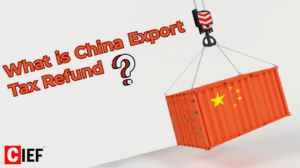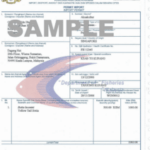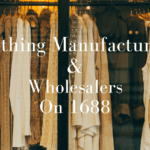
In China, Chinese manufacturers have 17% export tax rebate. As the name suggests, when Chinese manufacturers export goods to foreign countries, they can recover up to 17% of the value-added tax from Chinese government. This China’s policy encourage people to export goods and this policy is closely related to us, as an importer in Malaysia.
However, the importers of SMEs in Malaysia are now facing a problem that their suppliers are unable to claim the tax refund.
What are the reasons?
In order to understand the cause the Chinese supplier unable to claim the 17% tax, we must understand how most Malaysian importers import “bulk goods”. “Bulk” refers to cargo that is less than one container. Generally, goods within 20 cubic feet measurement referred as bulk cargo. In general, shipping company of China-Malaysia Line will set up a warehouse at a specific location in China.
After the importer had purchased the goods, the importer will send the goods directly to the supplier of the shipping company’s warehouse. Then, freight company will combine goods of other customers put into a container. Next, the goods import to Malaysia will use the name of the freight company and declare it to China. When the goods arrive to Malaysia, name of the freight company will be use during the import process, and finally “sell” it to the importers. This process is known as “one-stop” import in Malaysia.
To simplify the meaning. If we compare “one-stop” to a “bus ride”, the container is a bus and the cargo above is the passenger. They may just occupy a few seats or cubes and then come to the destination with the bus. However, there is a special passenger in this process, that is, “tax refund goods.” Some of these “tax rebates” cannot catch “one-stop” buses. They can only use the same bus with other “tax refund goods”. The two cannot be combined, in other words.
At this time a problem occurred, the quantity of “tax refunds” was relatively small and the process was too troublesome, resulting in very few containers. Therefore, importers could not find a suitable way of transport the goods back to Malaysia.
This led to two situations:
- The first situation, manufacturers gave up the idea of tax rebate, but since the tax refund cannot be returned, the price of the items cannot be reduced. Thus, the importer need to pay the cost of goods will increase which drastically.
- The second situation, the manufacturer did not choose to ship the cargo carrier’s container but chose LCL. In other words, instead of using public bus, they chose a private taxi. In the case of bulk cargo, the cost of this transportation method is several times than “one-stop”. As a result, the tax refund is reduced, but the importer must pay higher transportation fees.
So, what is the solution to this situation?
In fact, there is a third option, which is to find a freight company that has a “refund cabinet”, and the “tax return counter” is like a bus that only picks up special VIPs. This cabinet specializes in tax refunds, allowing manufacturers to claim 17% of their refunds. Export tax rebates can also be imported at a low cost. Despite being rather small, this type of tax return counter is still present. Therefore, after we learned this information and later met the manufacturers who insisted on tax rebates, we knew that we must use the third option to reduce our costs.
If you read this article and found it useful to you, please share it with your friends. Please check back for the second and third sections of the “Export Tax Rebates” series since a true understanding of this topic will transform your import career in ways you can only imagine.



